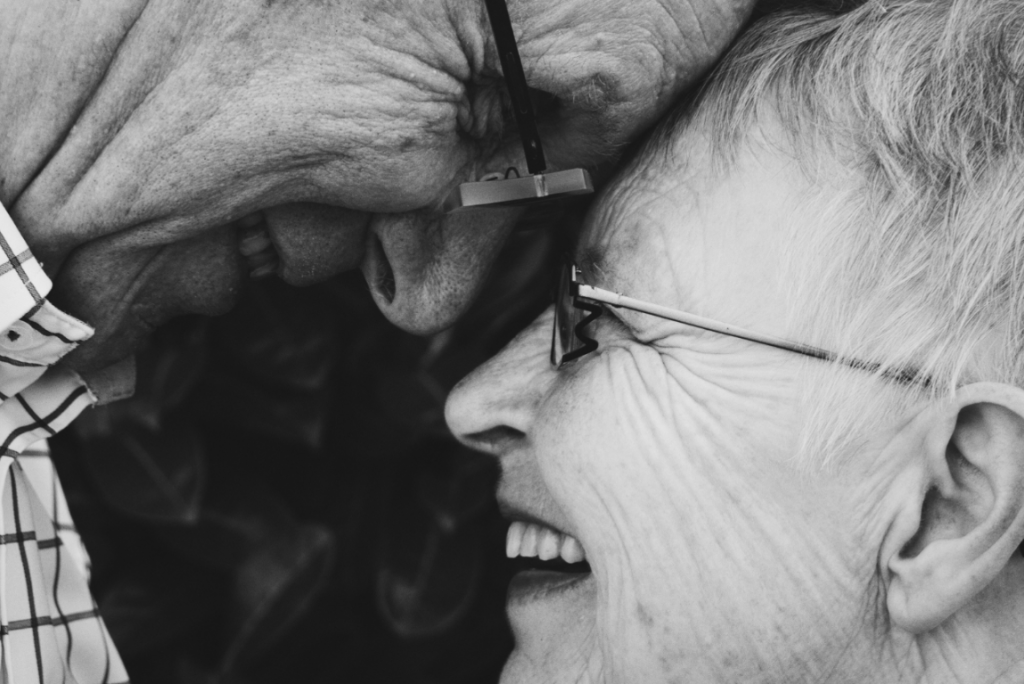What are the three phases of old age and what characterizes each one? According to Orosa (2014), cited in an article by Martínez et al. (2018), old age is an abstract concept, considered to be a stage of life. On the other hand, authors such as María del Carmen Amaro (2016) consider it to be a socio-anthropological construction.
Broadly speaking, we can say that old age, also called the third age, is the last period of life, following maturity. At this stage, we’re already advanced in age and, although some of our capacities diminish, full psychological maturity is also consolidated.
The three phases of old age
We find three phases of old age: young old, middle old, and old old. We’re going to explain what changes occur in each of these three phases, on a physical and psychological level.
We’re talking of general changes, which don’t always have to occur in the same way (or at the exact same age) in all people.
Phase One: Young old
This first phase of old age is, approximately, between 55 and 65 years. In women, this phase usually arrives with the last period. In other words, with the arrival of menopause.
This is the phase prior to old age itself, in which bodily and mental functions gradually decline.
Physical
On a physical level, sleep disturbances may appear. Sleep hours decrease and fat retention may also occur. Digestion becomes slower and heavier, and atrophy of muscle mass occurs.
Psychological
On a psychological level, melancholy can appear when people remember moments of their own life. It’s common to compare the present with the past. On the other hand, if they have children, they might also experience the empty nest syndrome (when the children leave home).
At this stage, moments of loneliness and boredom may also appear, especially if the person retires early or is widowed.
Phase two: Middle old
The second phase of old age ranges, approximately, from 65 to 79 years. This is ‘pure’ old age, where the weakening of biological functions is consolidated. It’s also common, at this stage, for the person to go over their past and re-experience memories.
Physical
On a physical level, all kinds of changes appear. Bones weaken and postural and muscular problems arise that cause pain, etc. Furthermore, making great efforts is usually no longer possible. Digestion problems also occur, and the risk of suffering from some types of cancer increases.
The senses also suffer, especially vision (for example, with cataracts ) and hearing (deafness). This can contribute to a greater evil: isolation.
Psychological
In the psychological field, at this stage, the decline of mental processes is usually consolidated, as in the bodily sphere. Crystallized intelligence is at its maximum capacity (everything learned). On the other hand, fluid intelligence, related to mental agility, is often at its lowest.
In addition, it’s at this stage that the risk of dementia begins to be more likely (from the age of 65). In fact, the risk of Alzheimer’s, one of the most frequent dementias, increases dramatically with age.
According to the DSM-5 (APA, 2013), at age 65, the prevalence of Alzheimer’s dementia is 0.6 percent in men and 0.8 percent in women; at 85, 11 percent vs. 14 percent, and at 90, 21 percent vs. 25 percent.
Phase three: Old old
In this last stage, from the age of 80 onwards, the qualitative change on both a physical and psychological level is important.
Physical
The fragility of the bones and joints predominates. This, added to other physical changes, can reduce the autonomy of the person.
The elderly at this stage may sometimes continue to live alone, although it may already have started to cause complications. Other health problems also appear that make the person more sensitive in this phase.
Psychological
Finally, on a psychological level, mental health problems, such as depression, due to loneliness and other factors, are more likely to arise at this stage.
There’s also a greater risk of social isolation, due to two reasons. Firstly, friendships are reduced as friends die. Secondly, the lack of autonomy makes leaving home difficult.
Two great ways to age
Although each individual ages in their own way, in each of these three phases of aging, there are two main forms. These are physiological and pathological. What does each form consist of?
Physiological aging
In this case, degenerative processes or diseases don’t prevent the person from adapting to their environment. These changes are part of their natural evolution.
Thus, the person ages in a ‘positive’ way, despite the changes they may experience. In short: they adapt, little by little, to their situation.
Pathological aging
In contrast, pathological aging is that which occurs when degenerative processes and diseases make it difficult for the person to adapt to their environment. More serious and disabling diseases also appear.

Final reflection on old age
Did you know that, according to the World Health Organization (WHO), between 2000 and 2050, the proportion of the planet’s inhabitants over 60 years of age will double? Thus, in the course of this half century, we’ll go from 605 million to 2 billion people of this age or more.
As we’ve seen, old age encompasses three different phases. It’s a vital stage of life and also a physiological process where physiological, social, and psychological changes appear.
Life changes and the passage of time makes us change with it.
Aging is a gradual process that occurs naturally and dynamically, and that we can’t avoid. Nevertheless, some people experience a better quality of life in old age. This depends on factors like social support, personality, personal resources, social resources, and the presence or absence of psychological disorders, etc.
“Cherish all your happy moments; they make a fine cushion for old age.”
-Booth Tarkington-
The post The Phases of Old Age and Their Physical and Psychological Changes appeared first on Exploring your mind.



















Comments